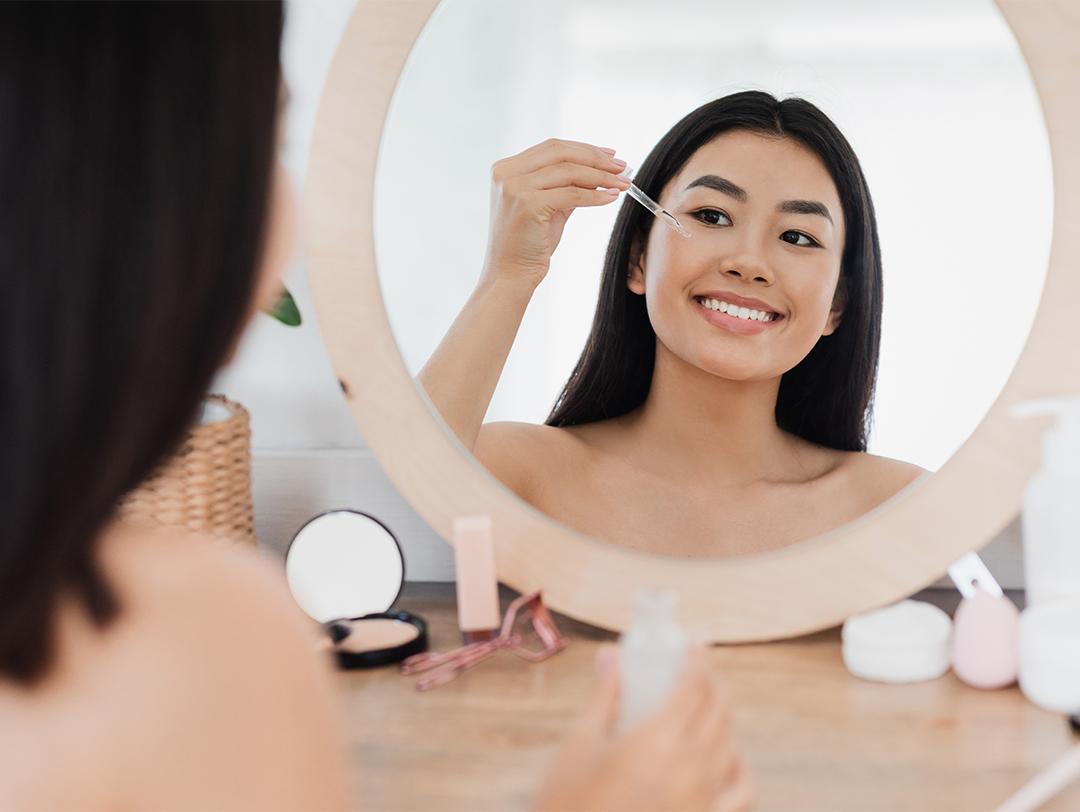What to Know About Tranexamic Acid—Your New Favorite Skin Brightener



Lindy Segal


From niacinamide to kojic acid to hydroquinone, there are so many skincare products that feature skin brightening ingredients. Now, a new ingredient has hit the market that we can’t wait to learn all about: tranexamic acid. Before you go adding yet another new product to your regimen, let’s take a deep dive into this buzzy skincare ingredient. We reached out to South Texas-based board-certified dermatologist Adeline Kikam, DO, MS, FAAD to find out just how tranexamic acid works, who should use it, and everything else you need to know.


It's about glam time you treated yourself.
MEET THE EXPERT
Adeline Kikam, DO, MS, FAAD is a South Texas-based board-certified dermatologist and skin of color advocate for inclusive skincare and dermatologic health.
What is tranexamic acid and how is it used in skincare?
First and foremost, the ingredient has important uses in the medical field, explains Dr. Kikam. “Tranexamic acid is a hemostatic agent, so it’s used to stop or control blood loss in conditions such as heavy menstrual bleeding (menorrhagia), blood disorders such as hemophilia, and others where it has a long history of use orally and intradermally.” And while those applications may sound, well, intense, don’t forget your skin is also an organ. Topical tranexamic acid is becoming increasingly popular, but the derm explains, “The mechanism of action of tranexamic acid as relates to its dermatological use is not yet well understood.” Ultimately, it mostly comes down to melanin, aka, our skin pigment. “It is hypothesized that it reduces the size of blood vessels in skin, as well as [slowing] melanin synthesis, improving redness and hyperpigmentation,” says Dr. Kikam.
What are the benefits of tranexamic acid for skin?
It reduces discoloration
Especially due to sun damage.“Right now it’s used off label orally and topically in dermatology for reducing UV-induced melanogenesis—or stimulation of melanin production—resulting in improved discoloration in skin,” explains the derm, adding that it can help in fading dark spots and the treatment of melasma, which is common in darker skin and women of childbearing age.
It brightens your complexion.
While it can be used as a targeted treatment for the skin conditions above, using a serum with tranexamic acid can also help even out overall skin tone.
It neutralizes redness.
Tranexamic acid can also help soothe irritation, and is tolerable for sensitive skin types.
How to use tranexamic acid in your skincare routine
Tranexamic acid is found in facial serums at a concentration anywhere from 0.5-5% (depending on the supporting ingredients in the formula). It can be used morning and night before moisturizer, and should always be followed with sunscreen in the morning. It’s tolerable on most skin types, and is especially great for acne-prone skin, “especially for dark spots or post inflammatory hyperpigmentation,” says Dr. Kikam, who says side effects are “minimal” and may include redness, stinging, burning, and rash.”
The ingredient can also be used alongside most of your other products. “It’s safe to combine with commonly used ingredients such as hyaluronic acid, retinol, vitamin C, and chemical exfoliants,” says Dr. Kikam. The caveat? Take caution when using more than one brightening product at a time. “Just be careful with over-combining it with too many other depigmenting agents to avoid over-irritation,” advises the derm.
Want to update your skincare routine with the IPSY Glam Bag? Take our Beauty Quiz now to get started. Already an Ipster? Refer your friends to earn points, which you can use toward products. Either way, don’t forget to check us out on Instagram and Twitter @IPSY.
Like this article? Share it with your friends by clicking the icons below!
Liked this post? Share!
Related Stories


Ingredient Index
Why Argan Oil Is the Versatile Ingredient Everyone Needs in Their Beauty Routine
Published on Oct 15, 2025 • 8 min read


Ingredient Index
Every Skincare Ingredient You Should (and Shouldn’t!) Use With Vitamin C
Published on Oct 2, 2025 • 9 min read


Ingredient Index
No, Not All Peptides Are the Same, But All Are Beneficial
Published on Aug 12, 2025 • 4 min read


Ingredient Index
Top Anti-Inflammatory Ingredients to Soothe Irritated Skin
Published on Aug 5, 2025 • 6 min read


Ingredient Index
Iron Oxides Are the Skin-Protecting Ingredients Your Routine Has Been Waiting For
Published on Mar 14, 2022 • 3 min read


Ingredient Index
Galactomyces Is the Latest Skincare Ingredient You’re About to See Everywhere
Published on Jul 10, 2025 • 3 min read


Ingredient Index
Everything to Know About the Gentle Healing Ingredient Bisabolol
Published on Jul 10, 2025 • 6 min read


Ingredient Index
Yes, You Should Be Using Adapalene If You Have Acne
Published on Jul 10, 2025 • 4 min read


Beauty Picked Just for You
Get 5 products worth up to $70
Plus exclusive access to epic deals up to 80% off
Starting at just $14/month. Cancel anytime.